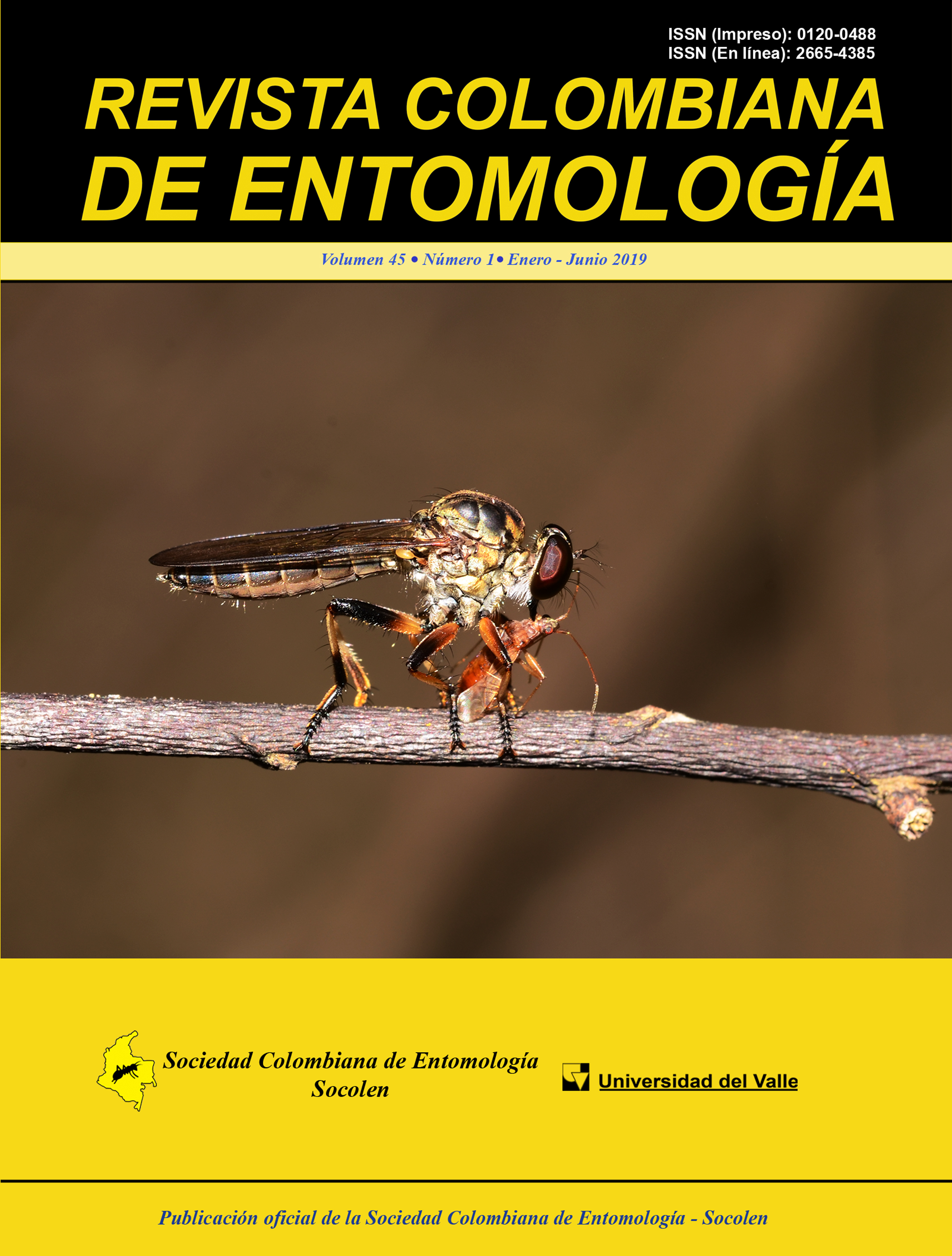Population study of Steneotarsonemus spinki (Acari: Tarsonemidae) on three varieties rice sowing in different times
Main Article Content
Pests and diseases are among the most important limiting factors for rice (Oryza sativa) production, as they are responsible for 35 % of economic losses. The adoption of adequate control measures in order to ensure better production rates is required. The Steneotarsonemus spinki mite is a pest that has generated many losses in the rice sector in recent years. The Colombian Agricultural Institute declared in 2005 that the presence of the disease known as “vain grain”, which affects grain quality and crop productivity up to 60 %, generated economic losses for farmers. S. spinki, is part of the complex of organisms that cause “vain grain”. Therefore the objective of this work was to evaluate the population dynamics of S. spinki in different sowing dates in the Agrosavia investigation center of Agustín Codazzi, Cesar, Colombia. For this objective, during 2014 three different rice varieties were sown every 20 +/- 3 days, for a total of seven plantings in a complete block design sown at random in fixed strips with four replications. At 60 days of emergence after each sowing, four plants were taken per replicate per variety at each sampling, with a total of five samplings being performed during the growth stage. In the CI Motilonia entomology unit, the number of mites were counted in the pods of the last three leaves of the central till of each plant. The populations of S. spinki exceeded 100 individuals per plant in some samples, the variety FED 733 presented the largest population of the mite, and the variety FED 2000 represented the smallest one. According to the results, the populations of S. spinki increased in the second semester in advanced physiological stages of the crop. Mite populations appear to have no effect on the yields of the rice varieties evaluated.
Accepted 2021-08-24
Published 2019-01-15

This work is licensed under a Creative Commons Attribution-NonCommercial-ShareAlike 4.0 International License.
Authors retain the copyright on their work and are responsible for the ideas expressed in them. Once a manuscript is approved for publication, authors are asked for a publication license for the term of legal protection, for all territories that allows the use, dissemination and disclosure of the same.





